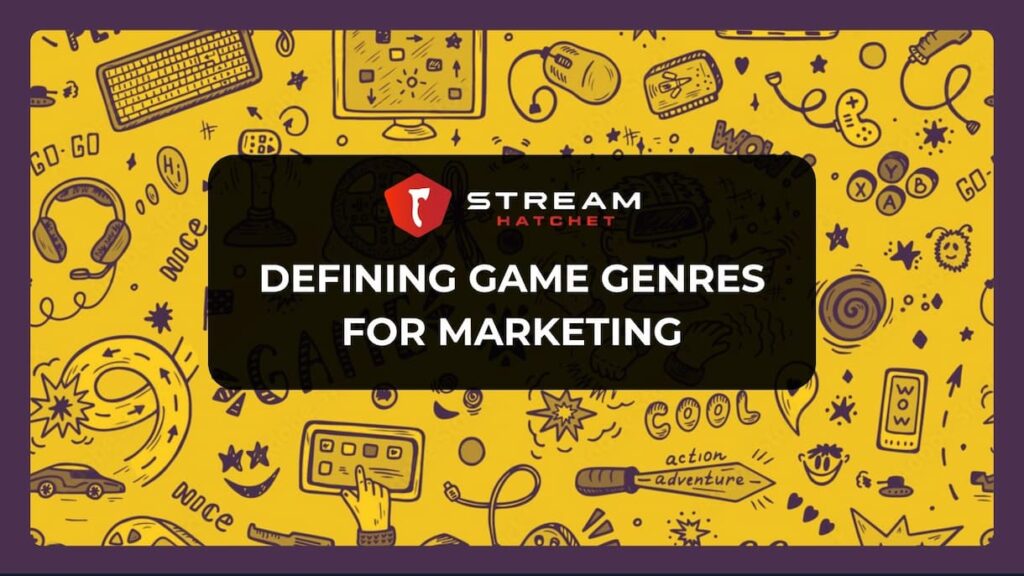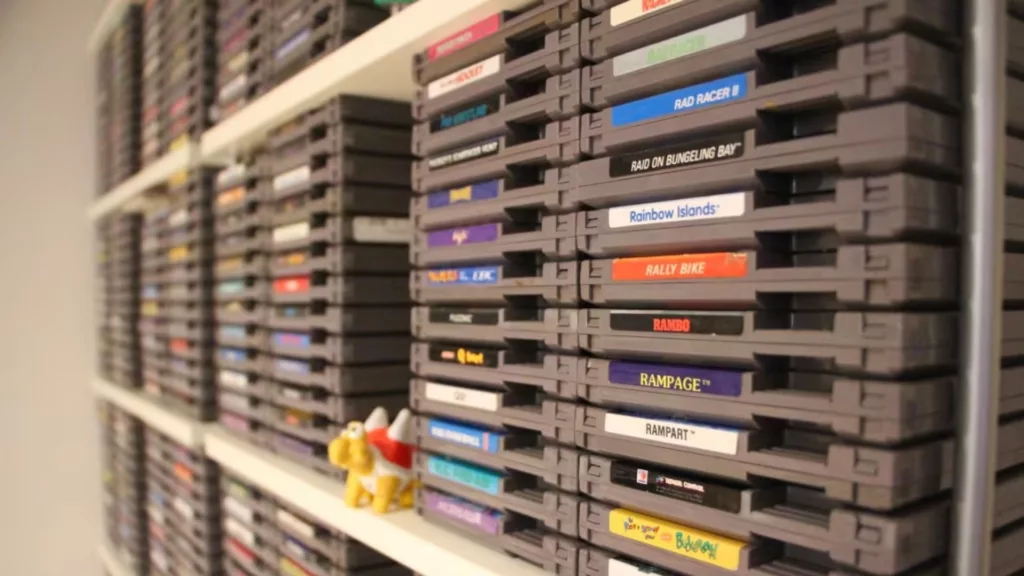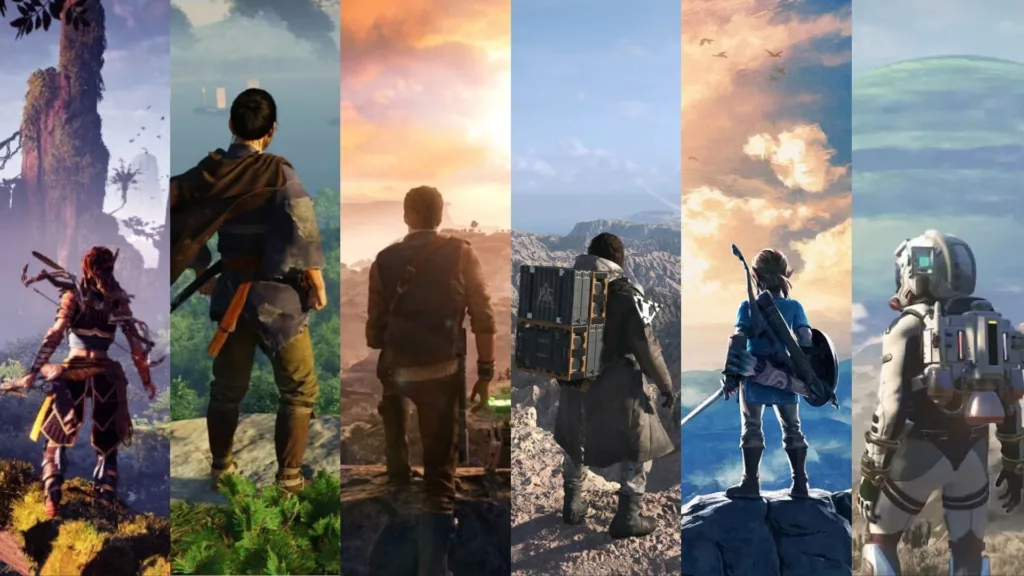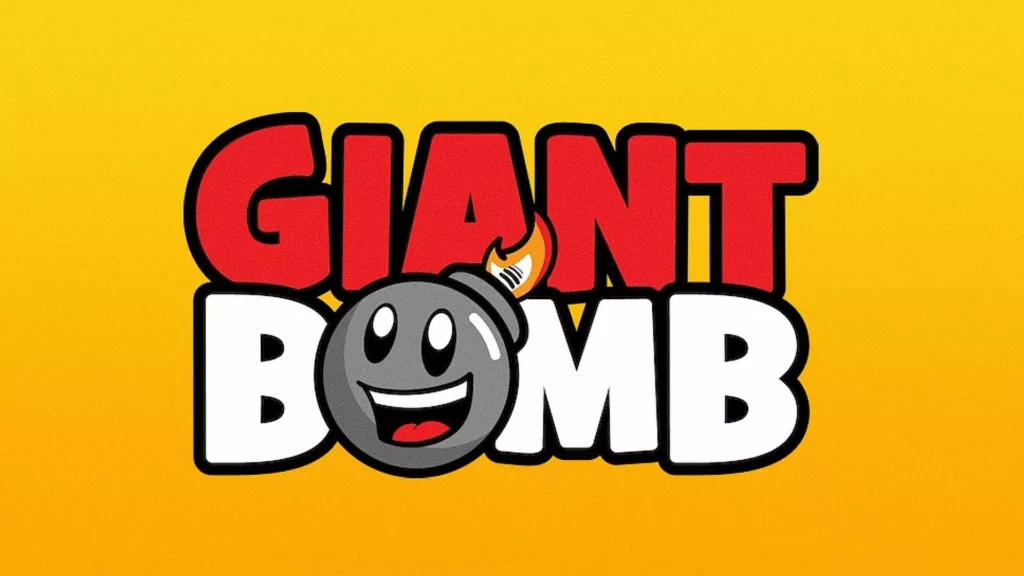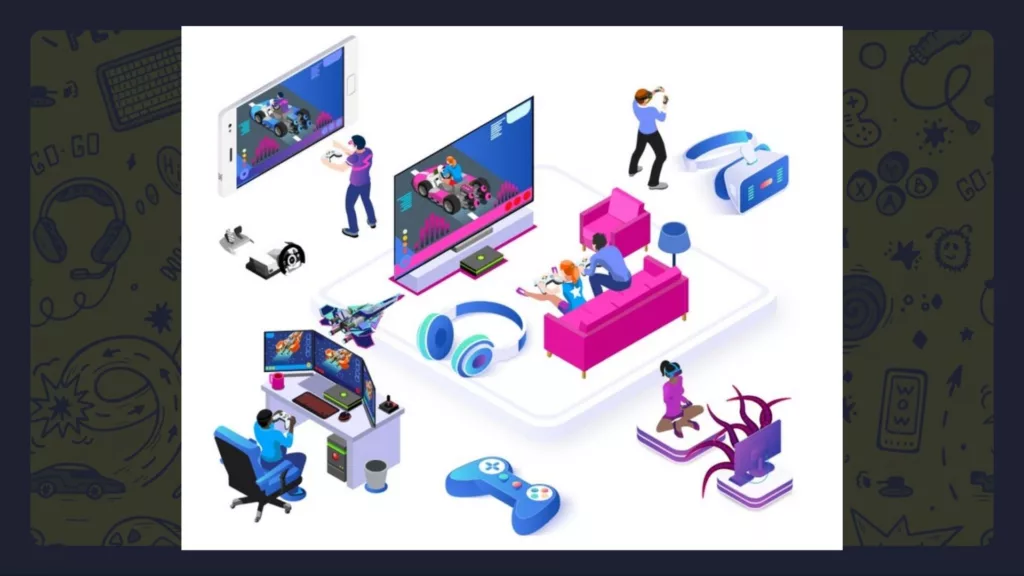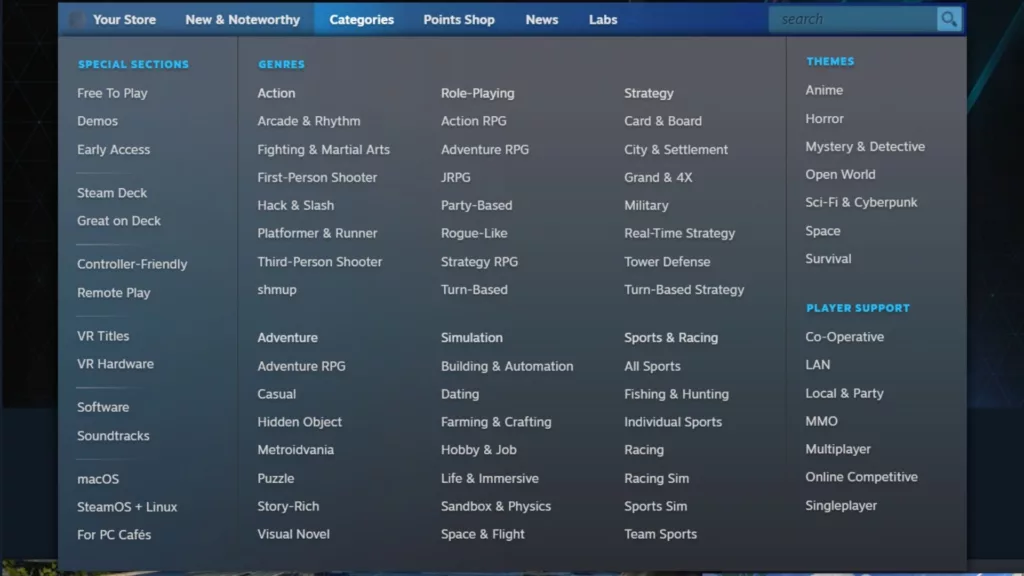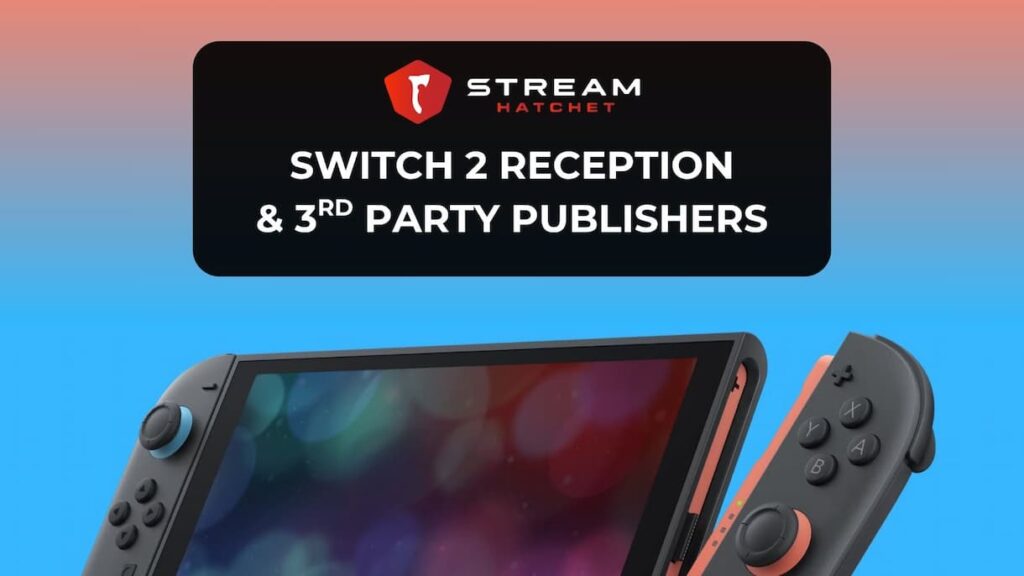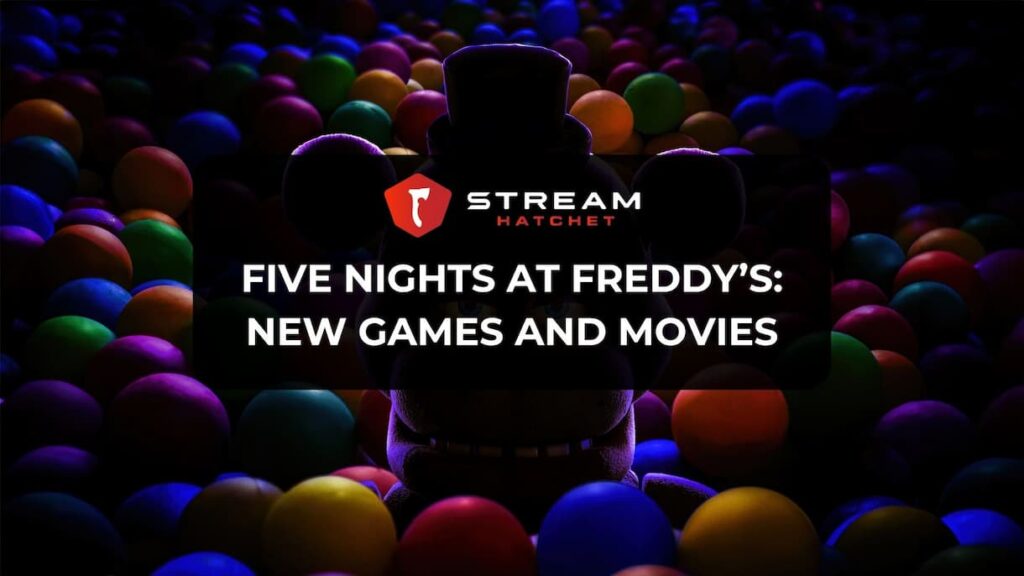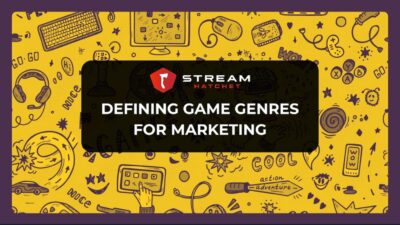Game genres are often our first port of call when trying to classify games and analyze trends among the industry. When a surprise hit splashes onto live streaming, our first instinct is to compare this game to other games within the same genre to see why it differs. Even here at Stream Hatchet we tend to follow this way of thinking, having covered game genre trends in 2024 and doing deep dives on individual genres as well.
But game genres aren’t perfect. As with any other medium, genres are constantly changing and their ambiguous nature often leads to confusion when trying to pin down an exact definition. Genre theory is beyond the scope of our discussion here, but there are a number of great thinkpieces on game genres you should read. Instead, in this article, we’d like to show you the way we define game genre definitions in our analyses and provide some tips for using genre more effectively in your own marketing.
How Do Game Genres Help With Video Game Discovery?
The reason why genres exist at all is a combination of factors, from taxonomy to marketing to education. But we take the view that the most important reason for genres is “collocation” – in other words, consumers use genres to find new media that is similar to media they already like. For example, some players are diehard Fighting game fans and will gravitate towards only those titles when looking for something new to try. But there are many other common ways to classify games, such as:
- Publisher
- Developer
- Age rating
- Target demographic
- Theme (Horror, Western, Anime, etc.)
- Purpose (Educational, simulation etc.)
Yet still, genre remains the primary way we categorize games. We owe this habit to early video gaming history: Starting in the 80s, stores and publishers used genres to sort their games onto shelves, thus helping players find games and keeping stock organized. While these newly defined genres were effective at helping marketers position their games, it also meant that games that didn’t fit these definitions fell through the cracks.
Thankfully this is no longer the case: Tracking and data curation have opened up whole new ways to get games in front of players. Steam commonly uses these features, like the Discovery Queue which takes many factors into account to suggest games that are new(er) and likely to appeal to the player. Steam also has the “People who played X also played Y, Z, etc.” section of a game’s store page which uses store-wide player data to assess how similar two games are in terms of appeal. Genres are still useful of course, but they need to be combined with other methods that audiences use to find games they like.
Defining Different Genres, Subgenres, and Concepts
Now that we know a bit more about why we use genre, it explains some of the common genres that pop up in marketing. These genres can be quite hard to define, but we tend to agree with Giant Bomb’s exhaustive wiki for fairly accurate genre definitions (like, for example, this page that defines an action RPG). Using Giant Bomb as a basis, we’re going to run through the strengths and weaknesses of three tiers of genre classification: Genres, Subgenres, and Concepts.
Genres
Types: Action, Shooter, Adventure, RPG, Fighting, Platformer, Puzzle, Strategy, etc.
Strengths: Conveys the primary way the player interacts with the game and thus the core gameplay mechanic. The names of these genres are also intuitive to casual gamers.
Weaknesses: Often too broad to be useful from a marketing standpoint, with vastly different games slotting into the same genre. The classic example is Super Mario and Grand Theft Auto both being classed as “Action Games” by certain outlets.
Subgenres
Types: FPS, MMORPG, MOBA, Racing, Survival Horror, Extraction Shooter, etc.
Strengths: More specific than genres, which provides a clearer image of the exact gameplay experience that a player can expect.
Weaknesses: These subgenres can be dominated by a few established games which drown out competition, making their apparent popularity misleading for new entrants to the space. For example, MOBAs are incredibly popular on live-streaming platforms but this is mostly due to just three games: League of Legends, Dota 2, and Mobile Legends: Bang Bang. A new MOBA won’t necessarily see the success implied by the subgenre’s viewership.
Concepts
Types: Open world, roguelike, souls-like, gacha, cozy, remake/remaster, dungeon crawler, etc.
Strengths: These concept labels are highly flexible and highly specific. This makes them incredible for marketing, especially when they’re trendy and generating a lot of discussion. In recent examples such as “souls-like” or “roguelike”, these concepts are often more attractive to players than the game’s genre itself.
Weakenesses: The high specificity/flexibility of these concepts is a double-edged sword. Marketers need to be knowledgeable in their use of these labels to avoid misleading players and triggering negative reviews. It’s for exactly this reason that we create so much content around concepts (linked above). Additionally, trendy concepts can quickly become passé and actually hurt marketing (like the “open world” label which has become so ubiquitous that it often exhausts player interest).
How We Use Genres for Discovering Trends at Stream Hatchet
Game genres aren’t perfect. This paper by Syracuse University summarizes some of the key failures of game genres: Their loose definitions and ability to change over time make working with genres like trying to handle quicksilver. And yet, genre is also a helpful label we can use in data sets to quickly sort games and get a bird’s eye view of major trends. That’s why we use a combination of publicly available data sets and our own industry expertise to bucket games into different genres.
For starters, we begin with Giant Bomb’s set of genres. These groupings are based on a solid combination of community consensus, editorial input, and developer intent. The result is a fairly accurate picture of genres thanks to mass commentary curbed by manual curation. Giant Bomb also uses a similar system to define themes and concepts which can be just as helpful when marketing a game. Giant Bomb isn’t perfect: Labelling GTA V as a “Driving/Racing” game like Mario Kart 8 or Trackmania doesn’t quite feel right. But it’s a good starting point.
We then track which streams are covering which games using the native tagging system of the relevant live-streaming platform. For example on Twitch, streamers themselves label their stream with specific games. This has its own issues of course: For example, a streamer might choose to label their streams as “The Legend of Zelda” because they’re playing The Legend of Zelda: Minish Cap. But this label technically refers to the 1986 original title of the same name, not the franchise. For that reason, we need to take into account common pitfalls with user-generated tagging (a common issue on platforms like Steam as well).
By taking this game-specific streaming data and cross-referencing it with the game’s location among Giant Bomb’s genres, we’ve now bucketed the games by genre. But we don’t stop there: For reports like this one, we apply our own methodology to ensure games are sorted in a consistent, informative manner. Our genre definitions are based on three main factors:
- The core gameplay component: We re-examine the main mechanic of the game that likely hooks in players and keeps them engaged. For example, on Giant Bomb Blue Prince is classified as an Adventure/Puzzle game. Although the title has adventure elements due to its unfolding narrative, we place it primarily in the puzzle genre as that’s the bulk of the game’s appeal.
- How the game is marketed: Publishers will often position their new games within a specific genre to increase appeal. This marketing bleeds out and affects public opinion of the title, shaping how the game is received online. In essence, the marketing creates the game’s genre. Take Dune: Awakening for example: One might class it as an MMO, but publisher Funcom emphasises that it is a Survival game because that label is trendier.
- How the game is discussed in online discourse: This point is closely related to the game’s marketing, but refers to how communities choose to adopt the game. Stardew Valley is, strictly speaking, a farming sim or a life sim. But the game’s community more frequently praises the cozy game aspects of the title, which is what drives the game’s appeal for newcomers. It’s the vibe, not the mechanics, that matter.
We believe that marketing and online discourse are just as important for game discovery as the actual content of the gameplay itself. Viewers watching a stream of a new game walk in with a preconceived notion of the game’s genre from marketing, then learn more about the genre through gameplay, and finally have this notion altered by discussion in the stream’s chat. For that reason, all three factors should be considered when trying to analyze which genre a game falls into and, subsequently, what trend it represents.
Tips For Using Genres Effectively in Marketing and Analysis
With our renewed understanding of genre, we can see how gamers use genre to inform their choices. Viewers of streams have a nuanced yet subconscious understanding of genre: Publishers who are able to tactfully shape this image of a game through influencer marketing will do a better job of appealing to said viewers. For that reason, we have some general tips that marketing departments should consider when defining their game’s genre:
- Be specific: Genres are meant to help gamers make a choice. Loose genres like “Action-Adventure” are applied to so many games that they lose all meaning. Games that strictly fall into this genre should consider a different hook to succinctly explain what the game is (e.g. a concept like “souls-like”).
- Don’t apply too many labels: Slapping on more labels doesn’t mean reaching more people. It generates confusion and makes it harder for the gamer to tell what they’re going to get. Focus on the core hook – anything else is an extra “element”. Call of Duty has a super popular zombie mode, yes, but you wouldn’t describe it as a horror game or a zombie game to your friend.
- Consider how stores classify games: Steam remains by far the most popular storefront for PC games. Use Steam’s “Categories” (pictured above) as a starting point when investigating trends among genres. You can then move onto their Tags if you need something more specific. Borrow their wording and it’ll be easier to slot in alongside similar titles.
- Trendy concepts make great hooks… in the right context: Souls-likes and roguelikes give the buyer a very clear image of what the game will entail. But don’t forget that these concepts are so trendy that they quickly become boring. Consider how your game adds to that label to make something new: Does it blend genres in a unique (and easily understandable) way? Maybe it takes a popular concept from another game and places it in a new setting?
Genres convey differently to viewers rather than they do to players. When you’re marketing a game via a streamer, consider which aspects of the gameplay are best to highlight for someone not directly controlling the game.
_
Game genres should always be taken with a grain of salt. They’re fantastic for getting quick at-a-glance insights into trends, but genre analyses need to be coupled with other tools to maximise their potential. When looking at a single game, ask yourself whether it is the genre that has attracted viewer attention, or whether it’s something else: The theme, the community, the concept, and so on. If you need guidance on genre trends, consider chatting with a game marketing agency who has this expertise.
To learn more live-streaming tips and tricks, follow Stream Hatchet and receive exclusive newsletter-only content:
